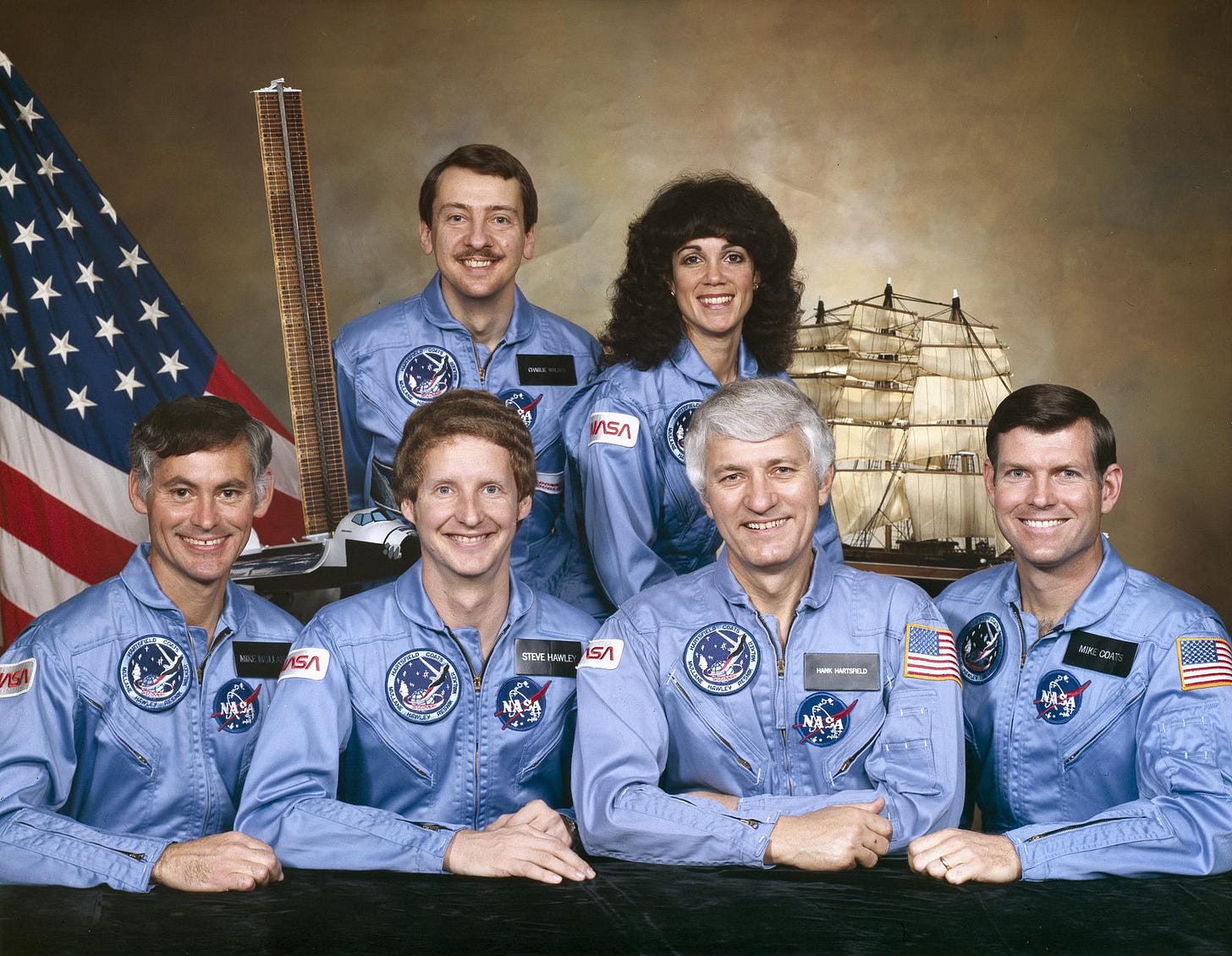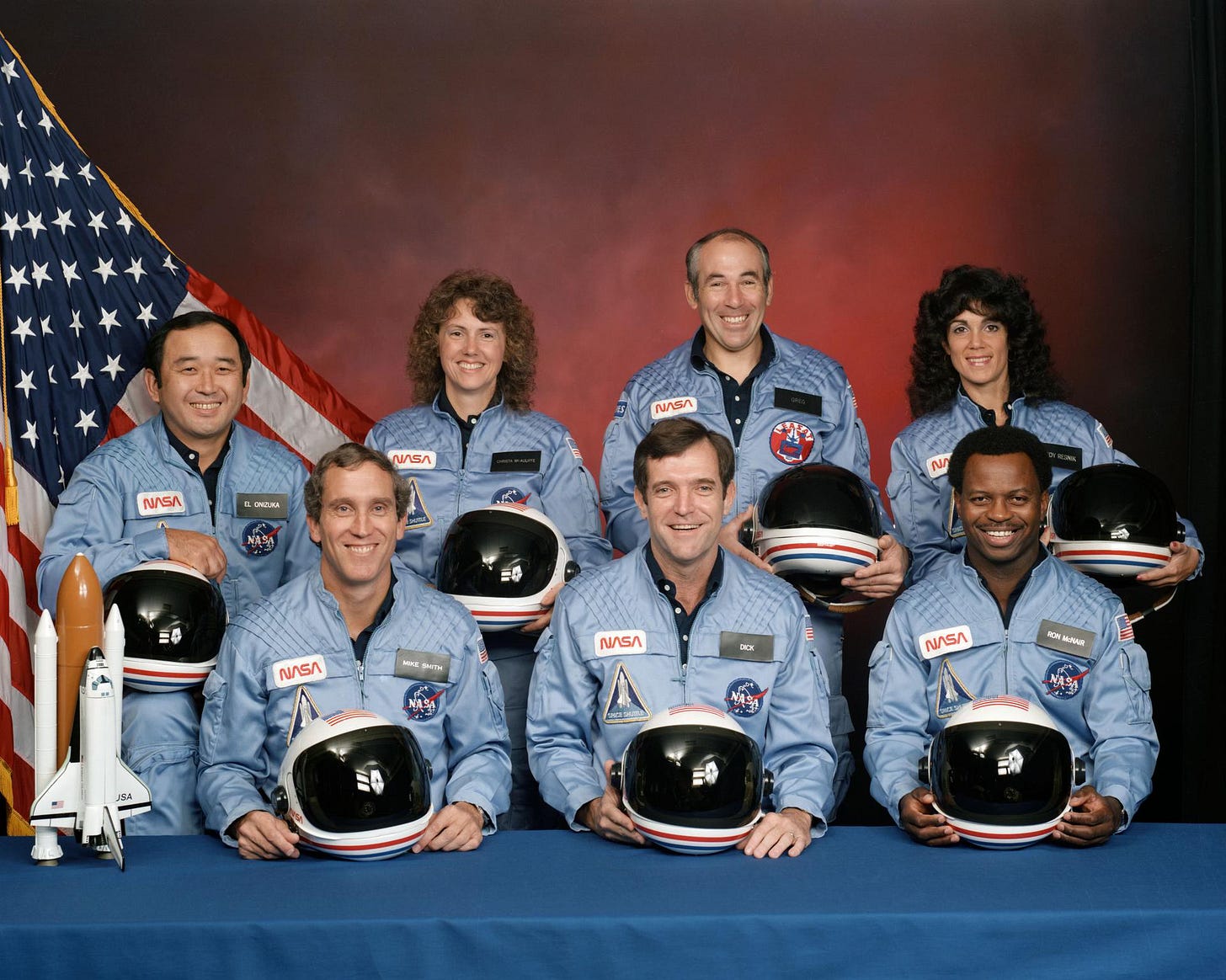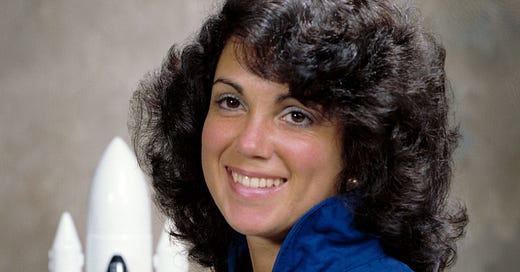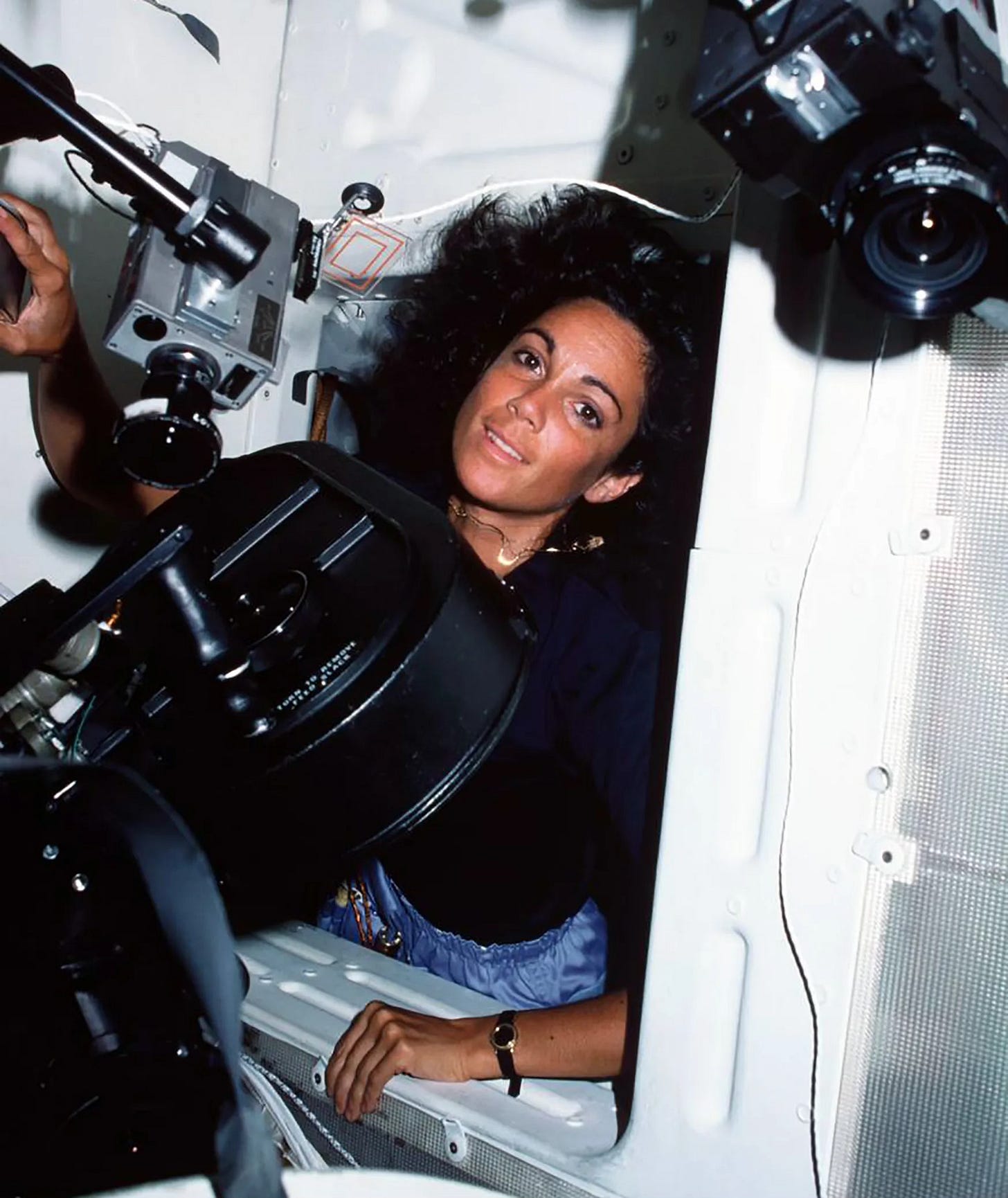America's First Women Astronauts, Part Two - Judy Resnik
Known as "one of the boys" among the TFNG astronauts, Resnik was famous for her sharp wit and sense of humour, including her impeccable ability to both serve and receive a joke.
When I was making my monthly writing schedule for Substack and realised I will be writing about one of my biggest role models on International Women’s Day, I started genuinely looked forward to it. Although I’m quite sure I could write an entire book about my immense admiration and fascination with Judith “Judy” Resnik, this article will keep things short and sweet, or at least shorter and sweeter than a book would. I will try to bring Judy’s magic closer to all those who don’t know about her yet which will, hopefully, make people understand why she’s among my greatest role models. Happy International Women’s Day to all women, and may we all come as close as we possibly can to being an absolute, forgive my language, badass that Judy was.
Judith Arlene Resnik was born on April 5, 1949, in Akron, Ohio. Due to her sharp intellectual abilities, Resnik left kindergarten earlier and started school at five. At school, she excelled in mathematics, science and foreign languages, giving her numerous career options to choose from. Due to her love for music and outstanding abilities on the piano, Judy even considered becoming a professional pianist. At seventeen, however, Resnik realised her love for math was greater than her love for music, and she enrolled at the Carnegie Institute of Technology. Before starting her university life, Judy became only the sixteenth woman in U.S. history to get a prefect score on her SAT exam (Gibson 94).
During the second year of her bachelor's degree, Judy attended classes on electrical engineering and soon developed an interest in it. This, eventually, resulted in her earning a Bachelor's degree of Science in electrical engineering from Carnegie in 1970. Following her graduation, Judy married Michael Oldak, whom she dated since starting at Carnegie. Her marriage to Oldak briefly improved her troubled relationship with her mother who disapproved of her career and dating choices from a young age. In fact, in 1966 when Resnik was seventeen, she filed a court case to switch the custody of her and her younger brother from their mother to their father. Judy won the case (Bernstein, Blue, and Gerber 25).
From 1970 onwards, Judy worked as a design engineer on missile and radar projects at RCA, alongside Oldak. Thanks to her hard work, she won the Graduate Study Program Award. Unlike Sally Ride, Resnik was associated with NASA early on in her career. NASA took notice of her when she published a paper covering the purposes of integrated circuitry, enabling her to work for them on electronics and software for their rockets and telemetry systems programs. During her time at RCA, Resnik’s expertise also proved as a valuable asset for the Navy, as she designed custom integrated circuits for their radar systems. In 1971, Resnik and Oldak moved to Washington, D.C. due to Oldak’s acceptance into Georgetown University. Resnik remained an employee at RCA, and enrolled in a master’s degree program at the University of Maryland.
In 1975, the two divorced, but remained good friends. Resnik went on to obtain her PhD in electrical engineering at the University of Maryland in 1977. Following her doctorate, she became a senior systems engineer for Xerox Company in Los Angeles. After her divorce, she became reacquainted with her former boyfriend, Len Nahmi, a commercial airline pilot who told her NASA was looking for astronauts. To improve her chances of being chosen, Judy ended up obtaining her piloting license. She was later described as “an excellent pilot” by astronaut Jerome Apt (Swaney).

Alongside Ride and four other women AsCans - “astronaut candidates” - Resnik made history. A woman who was always able to speak her mind and didn’t hesitate to humble others - especially men astronauts - when needed, Resnik became a well-respected and valued member of NASA’s team who didn’t allow men to belittle her or look down on her for her gender. Mike Mullane, a Space Shuttle astronaut who forged a close friendship with Resnik recalled that she “opened his male, sexist-pig eyes to the reality that women could do the astronaut job as well as any man” (Mullane 180).
In late August 1984, Judy became the second American woman to go to space when she flew aboard Discovery as part of the mission STS-41-D. Among others, she shared the living space aboard Discovery with her good friend, Mike Mullane, and Sally Ride’s husband, Steven Hawley. Mullane even recalled that the two referred to each other as “Tarzan and Jane” following a joke Mullane made when he asked her if “she wanted to swing on his liana” (Mullane 172). During the mission, as one of three Mission Specialists, Judy was responsible for the operation of the Canadarm, the Shuttle’s robotic arm used to deploy, manoeuvre and grab payloads. In fact, the crew deployed three satellites during their six-day stay in low-Earth orbit.

Following the success of Judy’s mission, she became the main contender to fly aboard STS-51-L, the doomed Challenger flight, also known as the Teacher in Space mission. Resnik was described as the “astronaut’s astronaut - smart, hardworking and dependable; not satisfied with second best,” the perfect crew member any astronaut could wish for (Cavallaro 31). In late January 1985, it was officially announced Judy was to be the second Mission Specialist and Flight Engineer aboard STS-51-L.
The media coverage for the Challenger mission was overwhelming, mainly due to the fact that Christa McAuliffe, a social studies teacher from Concorde, New Hampshire, was to become the first civilian in space by flying alongside Resnik and five other crew members of STS-51-L. Every crew member was repeatedly interviewed and followed, but Resnik refused to give any interviews and opted to just briefly respond to reporters’ questions when the entire crew gave statements. Judy was famously not fond of the treatment women astronauts received at the hands of the media, constantly probing into their love lives, asking inappropriate questions - “What does a man you just met say when you tell him you’re an astronaut? Does he go ‘you’re too cute to be an astronaut, come on, little lady, you can’t be an astronaut.’” - and overly focusing on physical differences between men and women astronauts in terms of sharing the living space aboard the orbiter and wondering what happens if/when a woman menstruates in space. Alongside her women counterparts, Judy firmly stood for an equal treatment of all astronauts, regardless of their gender, race or sexuality.
On January 28, 1986, Judy and her crew were supposed to make history. And they did, for all the wrong reasons. Seventy-three seconds after lift-off, Challenger transformed into a fireball. The crew survived the initial explosion and endured a three-minute long free fall into the Atlantic Ocean, off the coast of Florida. In early March 1986, the crew compartment was recovered. The STS-51-L crew was laid to rest on April 29, 1986. Resnik was buried at Arlington National Cemetery alongside mission commander, Francis Scobee, and pilot, Mike Smith.

Judy’s life, alongside the lives of the Apollo I crew, the rest of the Challenger crew, and the members of STS-107, was lost too soon and in such a tragic way. Seventeen people who had so much more left to give were taken abruptly and unexpectedly, leaving behind grieving families and loved ones. A few months short of turning thirty-seven, Judy had a whole life ahead of her. Despite her death at such a young age, Judy managed to inspire an entire generation of children who grew up with Shuttle launches, and lost their childlike innocence following Challenger.
Her brilliance, quick wit, and remarkable achievements even managed to inspire someone like me, born almost fifteen years after Challenger took place. Although Judy’s beauty was undeniable and oftentimes what she got noticed for the most, it’s just one of her many great qualities. Her dedication to her craft and the hard work she put in to achieve her dreams is something everyone can learn a thing or two from. Yes, she was a beautiful woman, blessed with good looks and everything that comes with it. More than that, it’s remarkable what she achieved thanks to her intelligence, curiosity and dedication to what she loved doing. It’s one thing to achieve greatness due to something that’s been given to you, something you were lucky enough to have been born with. It’s an entirely different thing to reach greatness thanks to who you turned out to be, how hard you’ve worked for what you wanted, and for what you left behind.
Judy’s legacy is one of brilliance, humility and grace - a woman who became a part of history book all thanks to her capabilities. She will remain remembered as a pioneer, someone who made incredible things possible to generations of women who came after her. And one can only aspire to reach the level of awesomeness Judy Resnik possessed. Gone, but never forgotten.





